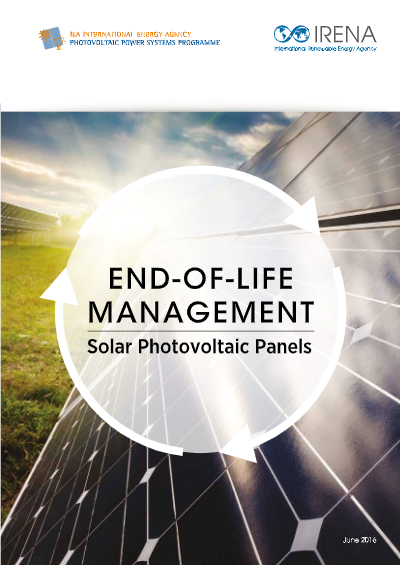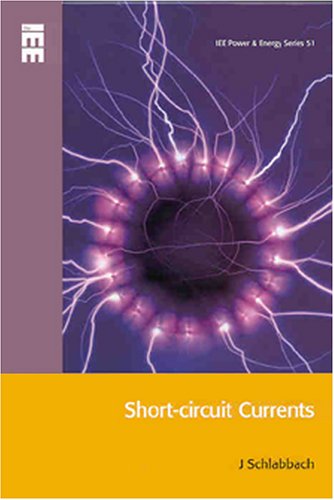| Book Name: | End of Live Management Solar Photovoltaic Panels |
| Free Download: | Available |

| Book Details : | |
|---|---|
| Language | English |
| Pages | 100 |
| Format | |
| Size | 5.28 MB |
End of Live Management Solar Photovoltaic Panels
End of Live Management Solar Photovoltaic Panels | PDF Free Download.
Solar Photovoltaic Panels Contents
Solar Pv Panel Waste Projections
- Global Solar Pv Growth
- Pv Panel Waste Model
- Pv Panel Waste Projections
Pv Panel Composition And Waste Classification
- Panel Composition
- Waste Classification
Pv Panel Waste Management Options
- Waste Management Principles For Pv Panels
- Regulatory Approach: The European Union
National Approaches To Pv Waste Management
- Germany: Mature Market With Eu-Directed, Pv-Specific Waste Regulations
- Uk: A Young Market With Eu-Directed, Pv-Specific Waste Regulations
- Japan: Advanced Market Without Pv-Specific Waste Regulations
- Us: Established, A Growing Market Without Pv-Specific Waste Regulations
- China: A Leading Market Without Pv-Specific Waste Regulations
- India: A Growing Market Without Pv-Specific Waste Regulations 6. Value Creation From End-Of-Life Pv Panels
- Opportunities To Reduce, Reuse And Recycle Pv Panels
- Material Supply And Socio-Economic Benefits
Conclusions: The Way Forward
Introduction to End of Live Management Solar Photovoltaic Panels
The deployment of PV technology has grown dramatically in recent years, reaching a cumulative global installed capacity of 222 GW at the end of 2015 (IRENA, 2016b).
PV offers economic and environmentally friendly electricity production but like any technology, it ages and ultimately requires decommissioning (which includes dismantling, recycling, and disposal).
As PV increasingly becomes a global commodity, and to ensure its sustainable future, stakeholders involved with each step of the product life cycle must implement sound environmental processes and policies, including responsible end-of-life treatment.
Regulatory frameworks that support the early development of life cycle management techniques and technologies will foster such processes and policies.
This report aims to look ahead of the curve, projecting future PV panel waste volumes in leading solar markets and distilling lessons from current PV waste management approaches.
The intention is that other countries can then move faster up the learning curve with technological and regulatory systems dealing with PV panel waste. In mature and saturated markets for products like automobiles in Europe or the US, the ratio of waste to new products is more or less constant.
By contrast, the ratio of waste panels to newly installed panels is currently very low at 0.1% (around 43,500 metric tonnes of waste, and 4 million metric tonnes of new installations estimated by end of 2016).2 This is because the global PV market is still young, and PV systems typically last 30 years.
Findings in this report show that a large increase in PV waste is projected to emerge globally around 2030. Some regions, like the EU, will start generating important waste volumes earlier because of their larger-scale adoption of PV since the 1990s.
The proportion of global PV panel waste to new installations is estimated to increase steadily over time, reaching 4%-14% in 2030 and climbing to over 80% in 2050.
End-of-life management with material recovery is preferable to disposal in terms of environmental impacts and resource efficiency as a way to manage end-of-life PV systems.
When recycling processes themselves are efficient, recycling not only reduces waste and waste-related emissions but also offers the potential for reducing the energy use and emissions related to virgin-material production.
This could be particularly significant for raw materials with high levels of impurities (e.g. semiconductor precursor material), which often require energy-intensive pretreatment to achieve required purity levels.
Recycling is also important for the long-term management of resource-constrained metals used in PV. The PV recycling industry is expected to expand significantly over the next 10-15 years.
Annual end-of-life PV panel waste is projected to increase to more than 60-78 million metric tonnes cumulatively by 2050 according to this report’s model.
This increasing scale should improve the cost-effectiveness and energy/ resource efficiency of recycling while stimulating the technical innovations needed to handle the wide variety of materials used in fast-evolving PV technologies.
This report highlights and demonstrates the importance and benefit of developing flexible regulatory frameworks.
They ensure sustainable PV end-of-life management and enable economically and environmentally efficient processes and technologies for product and material recovery processes.
They stimulate associated socio-economic benefits like the recovery of valuable materials and foster new industries and employment. As the first region witnessing large-scale PV deployment, the EU started to promote sustainable PV life cycle management in the early 2000s.
The voluntary extended-producer-responsibility (EPR)3 initiative PV CYCLE (PV CYCLE, 2016) was one example.
This has led to the development of pilot and industrial-scale recycling facilities as well as the first comprehensive legal framework on PV panels: the Waste Electrical and Electronic Equipment (WEEE) Directive of 2012 (European Parliament and Council, 2012).
In other parts of the world, little specific legislation for handling end-of-life PV panels yet exists, and waste is handled under each country’s legislative and regulatory framework for general waste treatment and disposal.
The purpose of this joint IRENA and IEA-PVPS Task 12 report is to communicate existing technological and regulatory knowledge and experience, including best practice related to PV panel end-of-life waste management.
The report also identifies opportunities for value creation from end-of-life PV by analyzing potential environmental and socio-economic benefits based on novel projections of PV panel waste to 2050. The report consists of five main chapters.
Chapter 2 provides predictions of global PV growth which act as the baseline for quantifying future PV panel waste streams (globally and for specific countries). These results provide the context and motivation for the waste management policies and recycling technologies described in the remainder of the report.
Chapter 3 characterizes the materials embodied in the different types of PV panels along with corresponding regulatory waste classification considerations that determine required treatment and disposal pathways for PV panels.
Chapter 4 describes general PV waste management options, explaining general waste management principles and the difference between voluntary and legal approaches. T
his is followed by summaries of country-specific current approaches to waste management in Chapter 5, including case studies of major current and future PV markets.
These are Germany, the UK, the US, Japan, China, and India. Chapter 6 covers value creation from end-of-life PV by analyzing opportunities to reduce, reuse, and recycle, as well as resulting socio-economic benefits. Finally, Chapter 7 outlines the conclusions and way forward.
Download End of Live Management Solar Photovoltaic Panels in PDF Format For Free.
Related Results : end-of-life management solar photovoltaic panels,
Related More Books
See More POST On : Engineering Books









![[PDF] Draw Buildings and Cities in 15 Minutes Draw Buildings and Cities in 15 Minutes pdf](https://www.freepdfbook.com/wp-content/uploads/2021/06/Draw-Buildings-and-Cities-in-15-Minutes-218x150.jpg)








![[PDF] Digital Image Processing An Algorithmic Introduction Using Java Digital Image Processing An Algorithmic Introduction Using Java](https://www.freepdfbook.com/wp-content/uploads/2022/06/Digital-Image-Processing-An-Algorithmic-Introduction-Using-Java.jpg)




![[PDF] 43 Years JEE ADVANCED + JEE MAIN Chapterwise & Topicwise Solved Papers 43 Years JEE ADVANCED (1978-2020) + JEE MAIN Chapterwise & Topicwise Solved Papers Physics PDF](https://www.freepdfbook.com/wp-content/uploads/2022/03/43-Years-JEE-ADVANCED-1978-2020.jpg)

![[PDF] Problems in Physical Chemistry for JEE (Main & Advanced) Problems in Physical Chemistry for JEE (Main & Advanced) Free PDF Book Download](https://www.freepdfbook.com/wp-content/uploads/2022/03/Problems-in-Physical-Chemistry-for-JEE-Main-Advanced.jpg)
![[PDF] Engineering Physics (McGraw Hill)](https://www.freepdfbook.com/wp-content/uploads/2021/05/bafc8c2685bb6823a9c56134f7fba5df.jpeg)

![[PDF] Engineering Chemistry By Shashi Chawla](https://www.freepdfbook.com/wp-content/uploads/2022/05/Theory-And-Practicals-of-Engineering-Chemistry-By-Shashi-Chawla-free-pdf-book.jpeg)
![[PDF] Chemistry: An Introduction to Organic, Inorganic & Physical Chemistry Chemistry: An Introduction to Organic, Inorganic & Physical Chemistry](https://www.freepdfbook.com/wp-content/uploads/2022/04/Chemistry-An-Introduction-to-Organic-Inorganic-Physical-Chemistry.jpg)
![[PDF] Essentials of Physical Chemistry Essentials of Physical Chemistry Free PDF Book by Bahl](https://www.freepdfbook.com/wp-content/uploads/2022/04/Essentials-of-Physical-Chemistry-bahl.jpg)
![[PDF] Biological control of plant-parasitic nematodes: soil ecosystem management in sustainable agriculture Biological control of plant-parasitic nematodes: soil ecosystem management in sustainable agriculture](https://www.freepdfbook.com/wp-content/uploads/2022/05/Biological-control-of-plant-parasitic-nematodes-soil-ecosystem-management-in-sustainable-agriculture.jpg)
![[PDF] Human Anatomy: Color Atlas and Textbook Human Anatomy: Color Atlas and Textbook Free PDF Book](https://www.freepdfbook.com/wp-content/uploads/2022/05/Human-Anatomy-Color-Atlas-and-Textbook.jpg)
![[PDF] Concepts of Biology Book [Free Download]](https://www.freepdfbook.com/wp-content/uploads/2022/05/Concepts-of-Biology.jpg)
![[PDF] Essentials of Biology [Free Download] Essentials of Biology Free PDF BOok Download](https://www.freepdfbook.com/wp-content/uploads/2022/05/Essentials-of-Biology-Free-PDF-Book-Downlaod.jpg)
![[PDF] Human Biology Book [Free Download]](https://www.freepdfbook.com/wp-content/uploads/2022/05/PDF-Human-Biology-Book-Free-Download.jpg)


